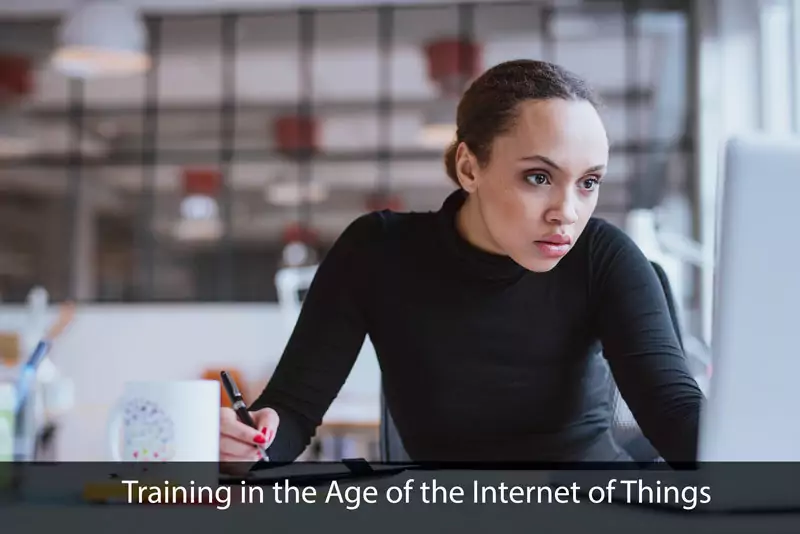Training in the Age of the Internet of Things: Part 2

In an earlier blog post on the Internet of Things, we examined what the Internet of Things is, how it will change work, and its broad implications for education and training. This blog post outlines some of the more specific ways in which the Internet of Things promises to transform education and training in the coming decade. 
From Instruction Manuals to Wearables
While Google Glass (more commonly known as Google glasses) has had few adopters, moving forward, sci-fi will increasingly become reality as screens are integrated into glasses or contact lenses. This will enable critical instructions, which one took the form of cumbersome instruction manuals and are now often available on mobile devices, to be integrated into the workers’ vision fields. Not only printed manuals but also the interfaces of the keyboard and touch screen will ultimately disappear. Theoretically, this means being able to arm new employees with the critical information they need to do their jobs but on an unprecedented level. It’s training that travels seamlessly with the employee wherever they go.
Classroom Design/Learning Spaces
Traditionally, training has taken place in separate spaces (classrooms, training centers etc.). While mLearning has already enabled us to put learning quite literally into learners’ hands, with the Internet of Things, learning spaces will increasingly recede into the background. What will take their place? It seems likely that as the internet becomes increasingly ubiquitous, time will be more important than space. Learning spaces, in this respect, will be replaced by learning events. Rather than think about how to create engaging classroom spaces, designers will focus on creating learning events. For example, in the shift from space to time, designers might begin to identify all the wasted moments that can be turned into training opportunities. In short, the temporality rather than spatiality of learning will gain import. In addition, wearable devices and networked objects will promote new forms of blended synchronous learning and teaching. The possibility for classrooms to exist across remote locations and include participants in a myriad of locations who may or may never meet face-to-face will increase.
Download additional free resources here.
Collaborative Learning and Teamwork
With the Internet of Things, employees working in different locations will increasingly be able to share information with employees in other locations without sending messages to each other. For example, two or more groups of scientists doing fieldwork in remote locations might be able to build a dataset simultaneously. Rather than carry out separate studies and later come back together to compare and contrast their collected data, they will be able to accumulate data in a collaborative matter on a constant basis. In turn, more attention will be paid to analysis and less to the onerous tasks associated with gathering and comparing datasets. Just as writing once freed up scholars to focus less on memorizing basic facts and more on conceptual problems, the Internet of Things will arguably increasingly free us to shift focus from data management to analysis.
Tactile and Kinesthetic Learning through Wearable and Networked Objects
Education and training have traditionally emphasized two senses above all others: sight and sound. In short, we learn by seeing and listening. Wearable technologies and networked objects will create new and exciting ways to learn on a tactile or kinesthetic basis. For example, a paramedic learning how to move an injured person without causing more harm or a physical therapist learning how to help someone walk again might be guided through the process using networked gloves.
Sound like science fiction? In fact, these technologies already exist. How and to what extent we decide to embrace wearable technologies and networked objects as potential tools for training in the workplace will depend much on our ability to imagine new ways of learning and our ability to create room for approaches to learning that increasingly put things in the shoes of educators. This is not to say that educators and trainers will become obsolete, but it is to say that the role of educators and trainers is about to undergo a radical change.